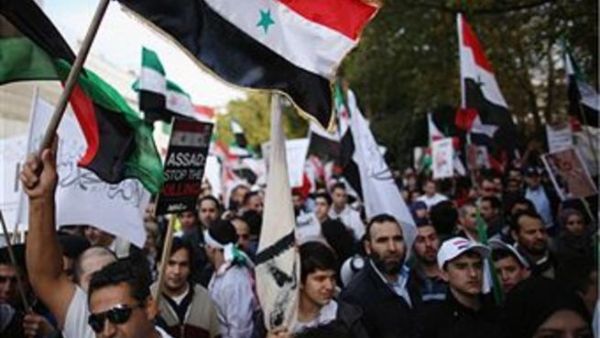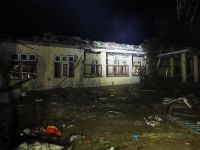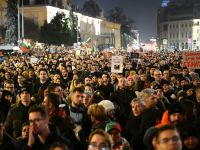As the end of a tumultuous 2011 nears, the Lebanese economy is cornered between a wild Syrian card and a helpless public sector, while the glory years of high single-digit growth are now more a chapter in history than an interrupted norm. Instead, economists see 2012 as challenging at best, although they confess a difficulty in peeking into a post-crisis Middle East, a complex Syrian dilemma, and a fractious Lebanese political environment.
“I don’t see the sources of growth in 2012, and a status quo in Syria is detrimental for Lebanon. Deposit growth and loan growth are slowing down and investments will decline because of negative private sector sentiment, especially from Saudi Arabia, Qatar, and Kuwait,” said Nassib Ghobril, chief economist at Byblos Bank.
In 2011, a domestic political crisis converged with regional upheavals for the first time since 1990 to drag Lebanon’s real GDP growth down to an estimated 1.5 percent, according to the International Monetary Fund. The IMF, which put the country’s growth in the new year at 3-4 percent, warned of high downside risks, mostly emanating from Syria’s turmoil.
Economists say most Lebanese sectors stand to lose in 2012, but the scale of the impact is unclear. “Historically, Lebanon cannot have healthy economic growth while Syria is unstable. Tourism through Syria will drop and the industrial sector will suffer next year if the crisis continues,” said Georges Nehme, dean of the faculty of business administration at Antonine University in an interview with The Daily Star. With the introduction of Arab sanctions on Syrian goods, dumping into Lebanese markets has already started, according to Nehme, and the process will accelerate in 2012, causing local businesses to suffer and leading to higher unemployment.
Exports to Syria, which were up 0.5 percent in the first 10 months of 2011, are seen decelerating as the neighboring country reins in foreign currency spending. “How long can they keep drawing down their foreign currency reserves? As of November, the central bank had spent $7 billion, or one third of its $21 billion reserves,” said Nehme.
Trade, however, remains a weak link between Syria and Lebanon whereas industry, tourism and banking are at play. In 2011, 24.4 percent less tourists have visited Lebanon in the first 10 months of the year, in part due to the sensitive security situation for Gulf tourists typically driving through Syria.
While Nehme sees a weaker tourism sector in 2012, Simon Neaime, chair of the economics department at the American University of Beirut, told The Daily Star that the sector may in fact reap some benefits from the demise of Syria’s tourism in 2012. “Where is the Arab tourist going? I expect Lebanon to see a high influx of tourists during 2012’s holiday season and contribute to growth,” said Neaime.
Syria attracted over 8.5 million tourists in 2010, according to Tourism Ministry figures, more than four times the number of Lebanon’s visitors, opening the door to massive capacity potentially diverted to Lebanon. Nehme, however, says that such a potential may be wasted by policymakers. “We should have a plan B for tourism, promoting health and education tourism to compensate for the potential weaknesses elsewhere. don’t expect the Syrian crisis to be positive because of the lack of a strategy and planning on our side,” said Nehme.
Neaime also pointed to banking and real estate as spots of positive spillovers from Syria in 2012. “Some Syrian funds drove up deposits in 2011, and I would expect that to continue in 2012 in addition to more Syrians investing in real estate in Lebanon,” said Neaime. But the scale of potential positive benefits across all sectors appears too small compared to the magnitude of forgone tourism, banking, investment and export gains as well as downside risks. In particular, Moody’s, a global credit rating agency, recently lowered Lebanon’s banking sector credit rating outlook to negative from stable, citing asset quality deterioration and exposure to Syria.
To Nehme, the move by Moody’s is “more a political message than a signal of fundamental weakness, and will have little impact on Lebanon’s banking sector in 2012.” He views the decision as a warning to the Lebanese banks operating in Syria against possible support to the regime.
The risks to Lebanese growth from Syrian scenarios are also mostly negative. Even a peaceful regime change, as with Egypt and Tunisia, would bring about a prolonged period of uncertainty and potentially weak Syrian public finance and slow growth. As a result, to drive growth in 2012, Lebanon’s economy will look for help from its most loyal customers, the Lebanese people. “Consumption is where growth will come from next year because of election cycle spending,” predicted Nehme.
In addition, Nehme expects the government to increase expenditures in 2012 as the elections fever heats up at the doorsteps of the 2013 parliamentary vote, although growth hinges on the lack of political spillovers from Syria and a functional government.
“Unlike 2011, 2012 starts with a deep Syrian crisis, but growth may reach 5 percent assuming status quo in Syria and Lebanon, and inflation will be low because of weak demand and Syrian dumping,” said Nehme.








